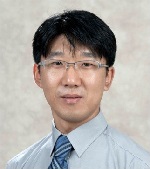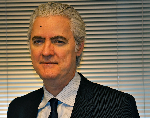Editors’ pick
The relative biological effectiveness of carbon ion radiation therapy for early stage lung cancer - PDF Version
Jeong J, Taasti VT, Jackson A, and Deasy JO
Radiotherapy and Oncology. 2020 in press. DOI: 10.1016/j.radonc.2020.09.027. Epub 2020 Sep 23
What was your motivation for initiating this study?
We had previously developed, over a number of years, a mathematical model of tumour response based on a local energy budget principle that simulates cellular evolution in response to radiotherapy. The model incorporates radiobiological effects from hypoxia, reoxygenation, repopulation and cell-cycle dependency, and results in a single dose-response curve that fits the tumour response of early stage lung tumours for a wide range of photon fractionation schedules. The model seems to describe well early stage lung tumour response (Jeong et al., "Modeling the cellular response of lung cancer to radiation therapy for a broad range of fractionation schedules"; Clinical Cancer Research 23.18 (2017): 5469-5479) and head and neck response (in preparation for publication).
We thought it might be able to model clinical data of carbon-ion radiation therapy (CIRT), to give us useful insights into tumour cell radiobiological parameters. In general, it has not been feasible to know precisely the relative biological effectiveness (RBE) for tumor response in the clinic, whereas one could study these in the laboratory.
What were the main challenges that you faced during the work?
Previously, we focused on tumour response to photon radiotherapy. Carbon has unique physical and radiobiological properties that are different from those of photons, because it is a charged particle, and slower and heavier than protons. To be applicable for carbon, the model had to be slightly modified to consider the radiobiological difference between carbon and photon, for example, the lack of a cell cycle effect. Other non-traditional effects that were not been included in the model, such as inhibition of angiogenesis, suppressed migration, and immune stimulation, were reviewed for possible inclusion in the model.
Another challenge was the derivation of the relevant physical dose of CIRT in each clinical data set. Since the relative effectiveness of the carbon beam is dependent on depth, CIRT uses non-uniform depth dose distribution to maintain dose-effectiveness throughout the spread-out Bragg peak (SOBP). Also, the outcome data reported only the clinical dose in Gray equivalent (GyE), instead of physical dose. To estimate the physical dose at the centre of SOBP as a representative dose, we had to review the dose specification system as well as the mean tumour size and margin configuration of each dataset. Despite these challenges, the results were very consistent with the model.
What is the most important finding of your study?
The most important finding is that the same basic radiobiological mechanisms seem to determine photon and carbon tumour response, and tumour control probability (TCP) can be reliably modelled for any fractionation scheme. The estimated radiosensitivity parameter values, α and α/β ratio of the cell-kill model, and the oxygen enhancement ratios, are of course different for carbon, and the values were radiobiologically reasonable. Perhaps surprisingly, the relative RBE of carbon compared with photon therapy is greater when many fractions are used. This is because of the quadratic cell-kill effect that makes photon hypofractionation “ablative”.
What are the implications of this research?
First of all that the Japanese data are very high-quality. Secondly, that this well-validated mechanistic TCP model can be used to inform protocol design. Does the protocol over-treat and introduce dangerous extra dose, since it is on the flat part of the dose-response curve? There is no reason to spend years running more early-stage lung protocols to pick the optimal dose-fractionation protocol. We now know where any protocol is on the curve, even for carbon therapy. We expect to have a web-page up and running soon (TCP4RT.info) so that investigators can use the model to estimate TCP for any early-stage lung dose-fractionation scheme.
Jeho Jeong and Joseph O. Deasy
Department of Medical Physics
Memorial Sloan Kettering Cancer Center
New York, USA

Jeho Jeong

Joseph O. Deasy